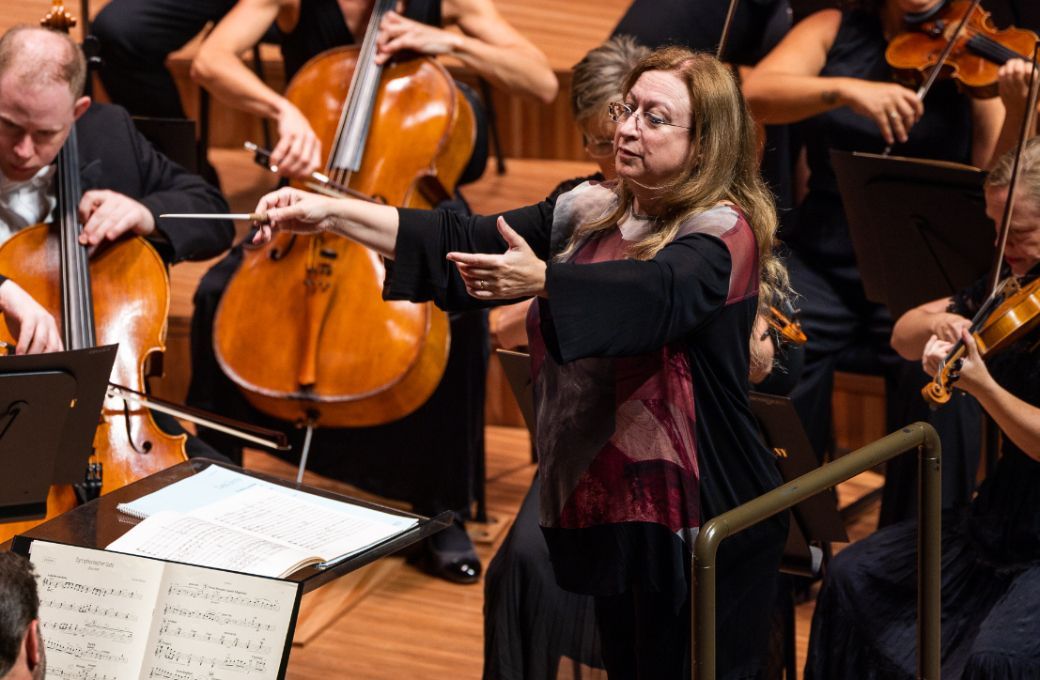In her first year as Chief Conductor of the Sydney Symphony Orchestra, Simone Young is strongly identifying herself to audiences as a Mahler specialist. Both the start of her tenure last July, and the present inaugural series of concerts for 2023 have been structured around an early Mahler symphony. The First, performed to a packed house on Friday night, was an overwhelming success: the clear signs of enjoyment from the players and the warmth of the ovation at the end show that this late Romantic (or early modernist) music still captivates performers and public alike, no matter how often it is heard.

Ingeniously, Young opted to open the concert with Blumine, the original second movement of the First Symphony which Mahler decided to cut. Sydney audiences had the opportunity to hear this piece reintegrated into the First a decade ago from the Australian World Orchestra under Zubin Mehta. Heard separately, the strings could be scaled back in numbers, which gave the movement a delicacy appropriate to its naïve beauty. The opening trumpet solo showcased David Elton’s beautiful tone, with mellow support from Gillian Williams on French horn, and later expressive oboe solos from Diana Doherty.
The rest of the first half was given over to Debussy’s Ariettes oubliées orchestrated by Brett Dean. In principle, arranging a piano Lied for symphonic forces can give new life to a song, as Wagner’s Wesendonck Lieder or Mahler’s Wunderhorn testify. In practice, there were intermittent balance problems which meant that Siobhan Stagg’s delectable soprano did not always come through. While there were many lovely orchestra colours throughout (the shimmering up-and-down scales in Green, or a cor anglais at the start of Spleen), I found myself missing the intimacy normally a constitutive feature of the post-coital reverie that is C’est l’extase langoureuse.
But all was forgiven thanks to the splendid reading of Mahler’s First after the interval. In improved Concert Hall acoustic, the spot colours in the slow introduction had a new clarity, like details appreciated in a restored painting. Particularly well-judged was the build-up to the famous “breakthrough” (when, as Adorno puts it, the “music expands with a physical jolt”). The second movement had a robust inexorability to start with; a later reappearance of this theme sounded like its sickly cousin before the mask was dropped and its full-throated self was heard again. The smarmy waltz in the middle section was hammed up nicely by the players.
In the Klezmer passages for the oboes in the third movement, the pair of trumpets interrupted like drunken musicians (an interpretation very much part of Mahler’s intention). The G major central episode, derived from one of Mahler’s Songs of a Wayfarer, was an oasis of innocence. Given the acerbic surrounding music, including the minor-mode Frère Jacques tune, we know this cannot last, but it was all the more beautiful for this knowledge.
The first theme of the Finale exuded passionate energy, and the players’ commitment was palpable. The tortuous journey to final triumph was wonderfully traced, and the sight of the French horns all standing at the peroration strengthened the resemblance of this theme to “And he shall reign for ever and ever” in Handel’s Messiah. We can only hope that the run of Mahler programmes continues, as Young’s affinity for this repertoire, and her success in shaping a persuasive narrative, is winning fans in the stalls and on the stage.


